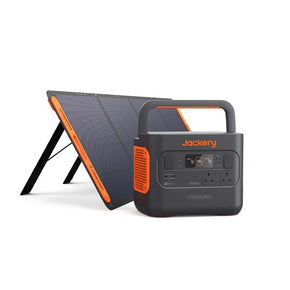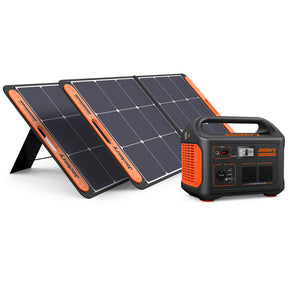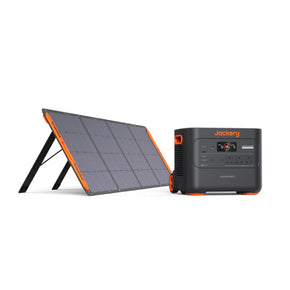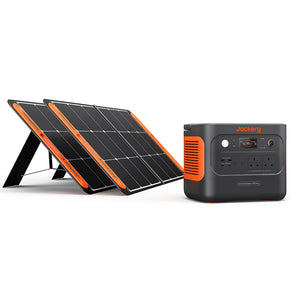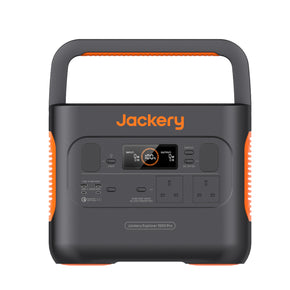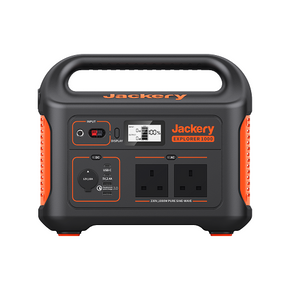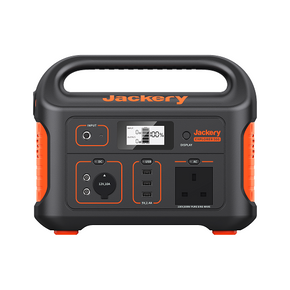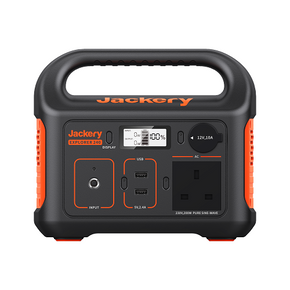Are Rechargeable Batteries and Solar Batteries The Same
Because solar batteries can be recharged like regular rechargeable batteries, it's often assumed that they are the same. Although there are striking functional similarities between the two, there are also several differences.
For starters, the function of any battery, no matter what kind, is to create an electric charge through a chemical process. In alkaline (non-rechargeable) batteries, the chemicals are spent after a certain number of reactions, at which point the batteries have to be discarded.

But, in regular rechargeable batteries, this chemical process can be reversed and re-initiated. So they can be used over and over again. The power source that a battery requires to generate the electric charge and how it stores the power generated makes a difference not just to its specifications but also to its lifespan, usage, capacity, and other functional factors.
So, continue reading to know how solar rechargeable batteries differ from regular rechargeable batteries and how to choose the right kind of battery for your requirement.
How are Solar Batteries and Normal Batteries Different?
Although deep-cycle batteries of 3 types are used in solar power systems, lithium-ion products are the preferred option.
They are lightweight, offer greater efficiency, require very little maintenance, and boast a significantly longer lifespan. Lithium-ion batteries are available in a range of sizes and power capacities, as well as in portable and non-portable models. So, they can be used in a wide range of applications.
As opposed to this, most regular rechargeable batteries are either Nicad (Nickel-cadmium) or NiMH (Nickel- metal hydride). They are typically smaller in size and capacity and certainly not as environmentally friendly as lithium-ion batteries.
That said, of these two, NiMH has 3 to 4 times the capacity of Nicad, yet it is no match to Li-ion batteries. Also, as they run out of charge, NiMH batteries tend to cut power suddenly and not in the trickle-down manner that is common in Nicad batteries and even regular alkaline batteries.
In contrast, lithium-ion rechargeable batteries, which bring superior technology to the table, often come with indicator panels of some kind that tell the user about the remaining charge and time to full charge. In addition to these, some of the other notable functional differences between solar batteries and rechargeable batteries include:
Discharge Rate
The discharge rate of batteries, including solar batteries, is given with the unit C-rate. This is basically the way to measure the rate at which a battery will charge/discharge the power it holds.
C-rate = Discharge current/Rated capacity of the battery
Most solar batteries are rated 1C. This means that if you have a battery of 1500 Wh, it will provide 1500 W of power for 1 hour. In terms of appliances, this would equate to an operation time of 10 plus hours for a 90-100 W mini fridge or over 2 hours for a 550 W rice cooker.
Also, most solar power batteries have variable charge and discharge rates, which allows them to be charged quickly and gives them the ability to support load-hungry applications such as appliances with heating elements and even power tools.
Also, high-end solar batteries have varying charge rates based on the power supply used for charging. Regular rechargeable batteries don't have such features, which means that their discharge rate is only suitable for low-power devices.
Lifespan
A NiCad battery has around 1.5 years of usable life at peak capacity, meaning that after this point, the battery will often only get half charged till it eventually degrades completely around the 3-year mark.
A NiMH battery operates on a similar principle offering around three years at peak capacity with deterioration in performance until up to 5 years. Overall, the lifespan of these rechargeable batteries is about 500-1000 cycles of charge-discharge.
However, given their limited power storage capacity, one full charge will seldom last more than a few hours. This means that these batteries could easily go through 3 or more cycles per day, which would put their realistic lifespan at no more than 1 year.
In contrast, solar rechargeable batteries that work on lithium-ion technology have considerably larger storage capacity. In fact, some can go on for several hours on a single full charge. Plus, they have twice the lifespan at 1000-2000 cycles. And that's just at peak capacity, which means that even after about 4-5 years of use these batteries will continue to function at 70% capacity.
Cost
Solar rechargeable batteries are undoubtedly more expensive than regular rechargeable batteries. However, their higher capacity and longer lifespan mean they can be used more frequently and for longer.
Moreover, the technologies used for manufacturing solar batteries are constantly improving. So, prices are going down and will continue to head south in the future. Add to this the low operational cost since they can be charged using just solar energy, and it is easy to see how their benefits make the higher initial cost a worthy investment.
Maintenance
Solar batteries, particularly those that are part of a solar battery pack are built to endure natural elements such as sunlight, cold, and moisture. So, all they need is a quick wipe-down with a moist cloth every six months or so.
As opposed to this, rechargeable batteries, despite their protective cover, are susceptible to moisture-related degradation. They are also not built to endure direct sunlight. Moreover, depending on the type of battery used, the voltage has to be checked after every use to prevent deterioration in performance with each subsequent charge-discharge cycle.
Performance
Given their resilience to environmental factors and their longer lifespan, solar batteries offer consistent and reliable performance over a long period of time. Typically, a solar battery pack will come complete with solar panels and a power station with multiple output sockets.
So, using solar rechargeable batteries with various appliances and gadgets is possible. In contrast, rechargeable batteries are better suited for single-gadget use.
Furthermore, solar batteries have considerably longer standby performance. So, they do not self-discharge (without being used) as quickly as regular rechargeable batteries.
In fact, the rate of self-discharge of high-quality solar batteries is rarely more than 2-3% per year. But, normal rechargeable batteries lack this reliability as they tend to lose their charge within weeks of being left unused.
The biggest performance-related benefit is of course that solar batteries can be charged entirely by using sunlight while regular batteries would require regular power supply.
Capacity
In terms of capacity, solar batteries are the gold standard of chargeable power technology. While normal rechargeable batteries can only hold one full charge, solar batteries have the capacity for energy storage from multiple charge cycles.
So unlike a regular rechargeable battery that just can power small devices, with a solar battery, it is possible to power high-load devices like electric stoves, toasters, mini-fridges, and more.
Ideal Usage
Solar batteries are perfect for off-grid applications given their higher capacity, reliable performance, and the fact that they can be charged completely through solar panels.
Moreover, a solar panel rechargeable battery is well suited for use in larger applications such as powering RVs, cabins, and tents. A solar battery pack presents the ideal way to store solar energy during the day so that it can be used at night for portable lights, cooking appliances, and other gadgets. This makes them particularly well suited for outdoor use, where access to an electric grid is unavailable.
Because they can only be charged by plugging the charging bay into an electrical outlet, they are only appropriate for use at home or at the workplace.
Charging Time
The charging time required primarily depends on the capacity of the battery. However, regular rechargeable batteries usually have a fixed charging time range of 2 to 6 hours. Since they can only be charged by being plugged in, nothing can be done to influence this time range.
Furthermore, in time the capacity of these batteries to get charged completely deteriorates, which means it takes longer to charge them.
Solar batteries, once again, have an edge here. A high-end solar battery pack will come with multiple charging options. So, these batteries can be charged by plugging them in, through solar panels, and even through a car port.
Generally, it takes no more than 2 to 4 hours to charge a large-capacity solar battery of 1500-2000 Wh.
Choosing Between Solar Battery and Rechargeable Battery
While every factor discussed above should be carefully weighed when choosing between solar batteries and normal batteries, ultimately, the decision should boil down to 3 factors:
- The budget: Regular rechargeable batteries are not designed for long-term use nor are they appropriate for heavy load applications. So, they typically cost no more than a fraction of buying a solar battery pack.
On the other hand, solar batteries are often sold as a part of a multi-component kit designed to weather frequent and hard use,, like the Jackery Solar Generator 1500 Pro. So, a high-quality product could easily set you back by £2000 to £3000 or more, depending on the storage capacity of the batteries.
- Your needs:If you intend to primarily use the rechargeable power source outdoors, when you are hiking or camping, or to power an RV or cabin, you will need a reliable unit that can be recharged solely through the use of sunlight.
Solar batteries offer just that. Plus, they are 100% environmentally friendly and designed to offer years of glitch-free performance. However, normal batteries simply aren't designed for that degree of resilience or reliability.
- The usage: A solar panel rechargeable battery can hold enough charge to serve as a backup in case of power outages. It can also reduce your reliance on the grid and lower energy costs. Unlike rechargeable cells that barely offer enough power to keep a phone or flashlight going for a few hours, solar batteries can power light fixtures in the house, your TV, and kitchen appliances for a few hours.
Plus, if you opt for a high-end product like the Jackery Solar Generator 2000 Pro, you get hassle-free, one-button operation. Moreover, in winter or at night, when using solar energy for charging is not an option, the unit can simply be charged by using a regular power outlet. This greatly enhances its functionality as a reliable source of backup power.
Conclusion
Starting with a clear idea of your power requirements and usage applications will help you to choose between solar and rechargeable batteries.
Both have their fair share of pros and cons. But while solar batteries call for a higher upfront investment they have a more practical use. Their higher storage capacity means they can be used as a backup and even to cut utility bills or to limit reliance on commercial grids.
In contrast, rechargeable batteries are cheap and provide greater portability. So, carefully consider the differences between solar batteries and rechargeable batteries before making a decision.
If you are interested in green energy and technological advances in the field as well as new products that can help you to live off the grid, sign up for our newsletter.





